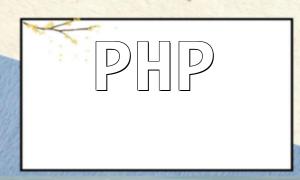In PHP application development, exception handling is a critical mechanism to ensure stable operation. PHP frameworks simplify error management through custom exception handlers and exception classes, making error handling more structured and efficient.
In PHP, an exception object represents an error or unexpected event during program execution. When an exception occurs, the framework captures it and provides detailed error messages and stack traces. Developers can define a global custom exception handler using set_exception_handler to manage exceptions consistently.
Most PHP frameworks provide a base structure for creating custom exception classes, allowing developers to define specific exception types for different features or modules, enabling more precise error management.
// Custom exception class
class MyCustomException extends Exception {
public function __construct($message, $code = 0) {
// Call the parent constructor with message and code
parent::__construct($message, $code);
}
}
When accessing a database, if the connection fails or a query encounters an error, a PDOException may be thrown. Using try-catch allows effective handling of these exceptions.
try {
// Execute database query
} catch (PDOException $exception) {
// Handle database exception
echo "Database operation failed: " . $exception->getMessage();
}
PHP frameworks are commonly used for model validation. If validation fails, a ValidationException is thrown. Developers can catch this exception to implement custom error handling.
try {
// Validate user model
} catch (ValidationException $exception) {
// Handle model validation errors
echo "Model validation failed: " . $exception->getErrors();
}
When processing HTTP requests, client errors such as 404 Not Found may trigger a NotFoundHttpException. By catching this exception, developers can provide user-friendly messages.
try {
// Handle HTTP request
} catch (NotFoundHttpException $exception) {
// Handle 404 error
echo "Page not found: " . $exception->getMessage();
}
The PHP framework's exception handling mechanisms provide powerful tools for managing various errors in applications. Through custom exception handling and practical use cases, developers can efficiently manage specific error types, improving application robustness and user experience. Understanding and leveraging these mechanisms is essential for building high-quality PHP applications.









